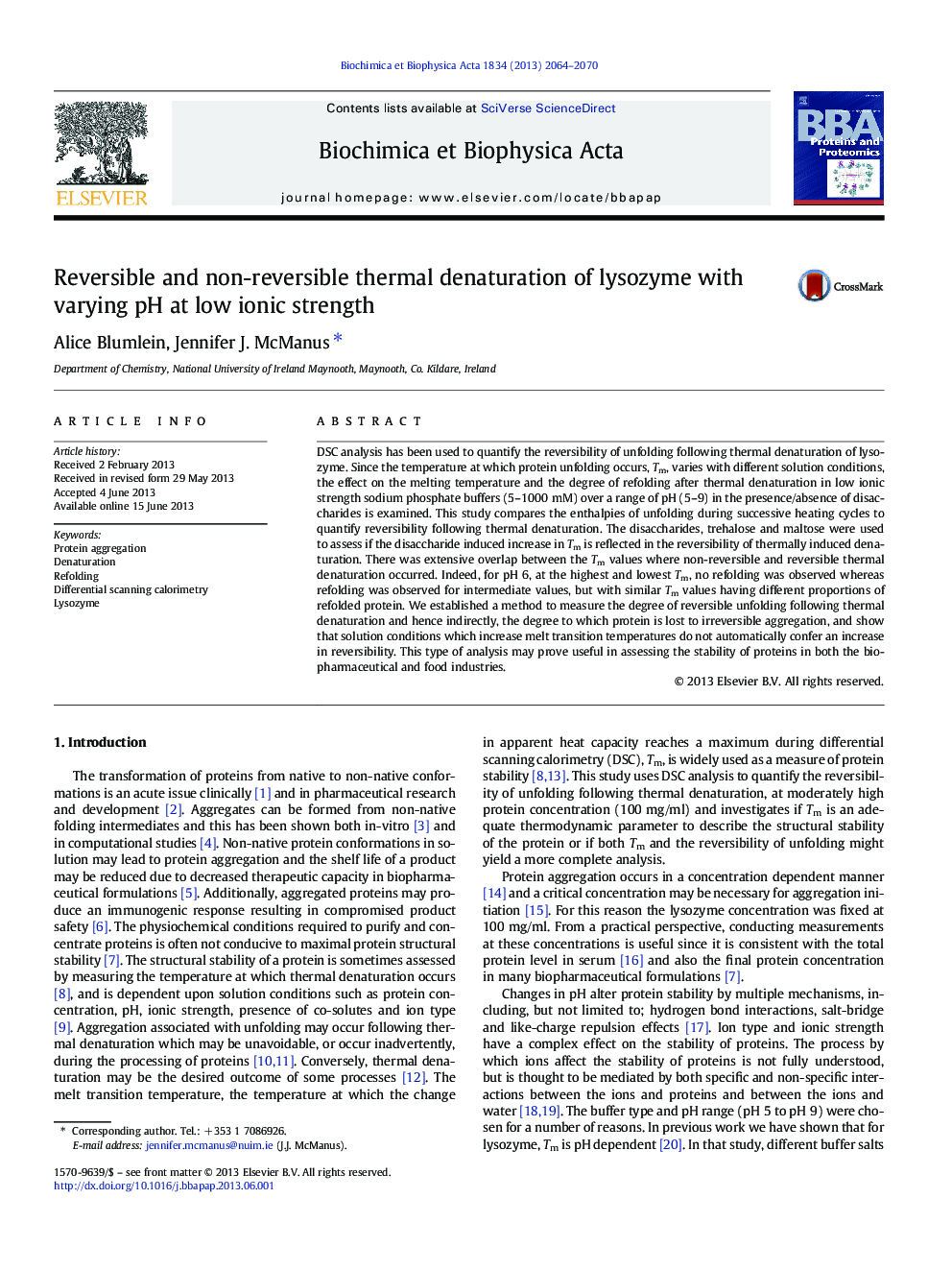| Article ID | Journal | Published Year | Pages | File Type |
|---|---|---|---|---|
| 10537235 | Biochimica et Biophysica Acta (BBA) - Proteins and Proteomics | 2013 | 7 Pages |
Abstract
DSC analysis has been used to quantify the reversibility of unfolding following thermal denaturation of lysozyme. Since the temperature at which protein unfolding occurs, Tm, varies with different solution conditions, the effect on the melting temperature and the degree of refolding after thermal denaturation in low ionic strength sodium phosphate buffers (5-1000Â mM) over a range of pH (5-9) in the presence/absence of disaccharides is examined. This study compares the enthalpies of unfolding during successive heating cycles to quantify reversibility following thermal denaturation. The disaccharides, trehalose and maltose were used to assess if the disaccharide induced increase in Tm is reflected in the reversibility of thermally induced denaturation. There was extensive overlap between the Tm values where non-reversible and reversible thermal denaturation occurred. Indeed, for pHÂ 6, at the highest and lowest Tm, no refolding was observed whereas refolding was observed for intermediate values, but with similar Tm values having different proportions of refolded protein. We established a method to measure the degree of reversible unfolding following thermal denaturation and hence indirectly, the degree to which protein is lost to irreversible aggregation, and show that solution conditions which increase melt transition temperatures do not automatically confer an increase in reversibility. This type of analysis may prove useful in assessing the stability of proteins in both the biopharmaceutical and food industries.
Related Topics
Physical Sciences and Engineering
Chemistry
Analytical Chemistry
Authors
Alice Blumlein, Jennifer J. McManus,
